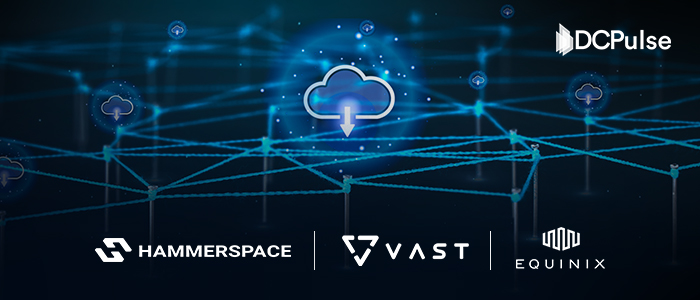Containerized data centers are gaining momentum, but ZTE believes this is only the beginning. As AI workloads outpace traditional infrastructure and grid constraints tighten worldwide, the Chinese telecom giant has unveiled its most ambitious modular play yet: an Artificial Intelligence Data Center (AIDC) built inside a prefabricated container. And this isn’t a demo. It’s a full-stack deployment unit designed to go live in weeks, not months.
AIDC: From Assembly to Acceleration
ZTE’s Artificial Intelligence Data Center (AIDC) solution is a modular, prefabricated system designed to address infrastructure bottlenecks, offering capabilities far more than a standard mobile server container.
Each unit is built on a modular steel frame, supports AI, High-Performance Computing (HPC), and cloud-native computing loads through “multi-rack integration,” enabling faster deployment and reduced land footprint.
According to the company’s official release, the AIDC is pre-engineered, factory-assembled, and thoroughly tested, significantly cutting the construction cycle by over 60%, and accelerating the roll-out of digital infrastructure.
The system arrives plug-and-play ready, with integrated power, cooling, and network cabling modules, plus automated management software and validated hardware components.
Built for AI Workloads, Designed for Sustainability
With AI training clusters and GPU deployments becoming denser, ZTE designed the AIDC to support both air- and liquid-cooled high-performance servers. One variant of the system even enables simultaneous air and liquid cooling, giving operators flexibility to match thermal strategies with specific workload needs.
According to industry benchmarks, liquid cooling technologies within the AIDC can reduce facility power consumption by up to 27% and cut total data center power use by over 10% compared to traditional air-only systems.
The container integrates precision air conditioning, in-rack liquid cooling, and AI-driven thermal control, offering a significant efficiency edge over conventional fixed-facility builds.
ZTE claims the solution can reduce power usage effectiveness (PUE) below 1.25, a level typically associated with advanced hyperscale facilities.
Energy efficiency is combined with flexible deployment: the AIDC can be installed on urban rooftops, in remote industrial zones, or at port-edge sites, making it especially appealing for telecom operators, OTTs, and governments looking to increase computing capacity without the costs of greenfield construction.
Modular AI-Ready Data Centers: Competitive Landscape at a Glance
Containerized data centers have been around for over a decade, but few have been purpose-built for the AI era. What makes ZTE’s AIDC stand out is its specialization for GPU-heavy workloads, something most competing solutions were never architected for.
Huawei’s Smart Modular data center, for instance, still leans heavily toward Information and Communications Technology (ICT) infrastructure rather than AI acceleration. Vertiv and Schneider Electric offer flexibility and field-proven systems, but they often require extensive customization to meet thermal and deployment speed targets relevant to AI applications.
The comparison below highlights how ZTE’s solution is tailored for speed, performance, and AI-native readiness:
|
Company |
Solution Name |
AI-Specific Design |
Cooling Type |
Deployment Time |
PUE Claim |
Edge/Remote Ready |
|
ZTE |
AIDC Prefabricated Container |
Yes – GPU & HPC |
In-rack liquid + precision air |
< 6 weeks |
< 1.25 |
Yes |
|
Huawei |
Smart Modular DC |
Partial – ICT focus |
Precision air |
~3 months |
~1.3–1.4 |
Limited |
|
Vertiv |
SmartMod + Power Module |
No |
Air + optional chilled water |
8–12 weeks |
Varies |
Yes |
|
Schneider Electric |
EcoStruxure Modular |
Customizable |
Indirect air + DX/chilled water |
12+ weeks |
1.3+ |
Yes (site-dependent) |
What emerges is a clear positioning: ZTE is not entering a crowded prefab market; it’s redefining it for the AI-first era, focusing on time-to-launch, cooling efficiency, and workload specialization rather than general-purpose modularity.
Market Significance and Forward Strategy
As enterprises shift compute toward distributed AI models, data center architectures must evolve beyond static footprints. ZTE’s push into modular AI-native systems could unlock new deployment models for 5G edge, autonomous logistics, industrial IoT, and more.
This launch also aligns with China’s growing export of digital infrastructure frameworks, particularly across the Belt and Road countries.
ZTE’s strategy aligns with Beijing’s push for digital sovereignty and infrastructure diplomacy, providing pre-integrated digital stacks to partner nations that lack the necessary ecosystem to build from scratch.
With its AIDC solution, ZTE is positioning itself as both a technology vendor and a strategic infrastructure enabler, exporting not just hardware but a deployable digital foundation tailored for emerging markets.
Beyond the Box: Strategic Implications of AIDC
ZTE’s AIDC isn’t just a new piece of hardware; it's a shift in the data center construction paradigm. By bringing modularity, sustainability, and AI readiness into a single prefabricated unit, ZTE is competing not only on performance but on time-to-deploy, cost efficiency, and workload specialization.
While other players have explored prefab solutions, ZTE’s AI-centric approach positions it at the forefront of a growing movement, one that sees data centers not as places, but as portable, intelligent systems ready to power the future.





